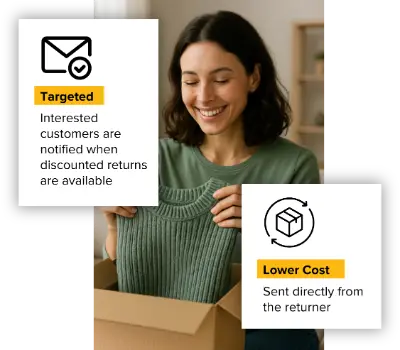Stone Edge Order Manager End of Support: Why Cloud OMS Wins

Last updated on September 17, 2025

In this article
 7 minutes
7 minutes
Stone Edge Order Manager is hitting a wall. Microsoft is phasing out support for the very servers and Access builds it depends on, and that’s a ticking clock every ecommerce operator should pay attention to. If you’re still running Stone Edge, you’re essentially building your business on quicksand, and the cracks are already showing.
This isn’t just about patches or IT headaches; it’s about what happens when your order management software is chained to an outdated infrastructure that can’t keep up with modern ecommerce. And here’s the kicker: even if you upgrade the servers and buy yourself another year or two, you’re still stuck on the same hamster wheel of fragile dependencies and mounting risk.
So let’s talk about why now is the time to shift from legacy to cloud, what that really means for inventory management and customer experience, and why solutions like Pulse Commerce are pulling so many multi-channel retailers out of this mess.
Slash Your Fulfillment Costs by Up to 30%
Cut shipping expenses by 30% and boost profit with Cahoot's AI-optimized fulfillment services and modern tech —no overheads and no humans required!
I'm Interested in Saving Time and MoneyWhy Stone Edge Order Manager Is Running Out of Road
Stone Edge has been around for decades, and I’ll give credit where it’s due: the software had a broad install base and gave small and not-so-big companies access to big company functionality when ecommerce was still in its early days. It helped countless multi-channel merchants manage mail and phone orders, connect basic web stores, and handle payment processing across multiple websites.
But here’s the reality today:
- Microsoft deadlines are brutal. Windows 10 support ends in October 2025, Office/Access 2016 and 2019 die on the same day, and SQL Server 2016 goes dark a few months later. That means every SEOM shop still running on those stacks is staring down unsupported software. No patches. No protection. No compliance.
- Stone Edge Technologies itself has already declared end-of-life for older versions. Legacy backends shut off in 2024. If you’re not on their most recent build, you’re already on borrowed time.
- The dependencies are brittle. SEOM still runs on a 32-bit Access Database. It’s vulnerable to updates breaking queries, it’s prone to crashes, and it requires constant manual babysitting across workstations.
When your order management system is this fragile, it’s not just an IT inconvenience. It hits operations directly: you lose orders, you frustrate customers, you burn through staff hours trying to patch problems instead of growing sales.
The False Promise of “Just Updating
Some businesses convince themselves: “We’ll just upgrade to the latest supported version of Access or Windows, and we’ll be fine.” But that’s like slapping duct tape on a cracked foundation.
Every upgrade cycle with Stone Edge means:
- Migrating data manually.
- Paying for new servers or licensing.
- Testing every single shopping cart integration again because something always breaks.
- Training staff on slightly different workflows that never quite feel seamless.
You end up managing countless configurations, supporting multiple tools, and trying to streamline services in a way the system was never built for. The labor costs aren’t just hidden, they’re compounding.
And the kicker? You know you’ll be back here in 18 – 24 months when the next Microsoft support cliff hits. It’s a permanent treadmill.
What That Means for Stakeholders
If you’re a CFO, these aren’t just IT costs; they’re opportunity costs. Money spent propping up an edge order manager system could instead fund new customer management strategies, loyalty programs, or expanded sales channels.
If you’re in operations, every time SEOM crashes, your team spends hours reconciling purchase orders, stock adjustments, or missed shipments. You don’t eliminate packing errors; you multiply them.
If you’re in marketing, you’re stuck with clunky reporting that can’t keep up with the data you need to understand your target market. While competitors leverage advanced analytics dashboards, you’re still exporting CSVs and hoping formulas line up.
And if you’re the CEO? You’re looking at a business model where IT becomes the bottleneck instead of the enabler. That’s not sustainable in 2025.
Looking for a New 3PL? Start with this Free RFP Template
Cut weeks off your selection process. Avoid pitfalls. Get the only 3PL RFP checklist built for ecommerce brands, absolutely free.
Get My Free 3PL RFPWhat Cloud Order Management Systems Deliver
This is where modern order management software flips the script. A true cloud OMS isn’t chained to one OS, one Access build, or one server in a closet. It’s designed for the way multi-channel retailers actually sell today.
Always-On, Always Updated
With a SaaS (software-as-a-service) platform like Pulse Commerce, you’re not waiting for Microsoft to tell you if your OMS still works. Updates are automatic, infrastructure is maintained by the vendor, and you never again have to wonder if a patch will break your order manager.
Real Integration Power
Pulse Commerce offers countless pre-built integrations with leading payment gateways, shopping carts, and sales channels. Whether you’re running simple web-based businesses or a complex multi-brand business model, the integrations are stable, scalable, and tested across a wide base.
Reduce Labor Costs, Increase Accuracy
With automation baked in, you actually eliminate packing errors and reduce labor costs. Order routing, rate shopping, and even supplier purchasing can be handled automatically. That frees your staff to focus on value-added work instead of babysitting servers.
Data and Control
Cloud OMS means advanced reporting, real-time inventory management, and the ability to control operations across multiple websites and sales channels from one interface. You don’t just manage inventory, you manage growth.
Comparison: Stone Edge vs Cloud OMS
| Feature / Risk Area | Stone Edge Order Manager | Modern Cloud OMS (Pulse Commerce) |
| Software & OS Support | Dependent on Microsoft lifecycle; Access 32-bit only | Vendor-managed, always supported |
| Infrastructure | On-prem servers, prone to crashes, costly to maintain | Cloud-native, redundant, secure |
| Integrations | Limited, often break during updates | Countless pre-built integrations, reliable |
| Scalability | Struggles with order spikes, SKU growth | Scales elastically with demand |
| Labor Costs | High; staff time wasted on manual fixes | Lower; automation reduces errors and costs |
| Customer Management | Basic, limited reporting | Advanced tools for CRM, analytics, and branding |
| Flexibility | Constrained by legacy design | Easily customized workflows, flexible configurations |
Real Voices, Real Results
Don’t just take my word for it. Here’s what businesses running Pulse Commerce are already saying:
Pulse Commerce’s order management system has transformed our ability to leverage our Adobe Commerce storefront. Customer satisfaction is up, and back-office productivity has improved by at least 35%.
~Michael O’Leary
Brightlife Direct
After evaluating dozens of vendors, none came close to Pulse Commerce. We’re now managing inventory, processing orders, and serving customers across 15+ channels without the chaos.
~Marge Kim
Game4Less
These aren’t abstract promises; they’re results you can tie directly to bottom-line improvements.
Scaling Made Easy: Calis Books’ Fulfillment Journey
Learn how Calis Books expanded nationwide, reduced errors, grew sales while cutting headcount, and saved BIG with Cahoot
See Scale JourneyConclusion: Stop Fighting Yesterday’s Battle
Stone Edge once made sense for typical users, smaller merchants trying to juggle phone orders, early web stores, and manual purchase orders. But the world has moved on.
Today’s multi-channel merchants need systems that scale, integrate, and innovate. Hanging on to legacy software like SEOM means doubling down on fragility, risk, and costs.
So here’s the takeaway: don’t wait for the support deadlines to run out. Use this moment to rethink your order management system entirely. The right selling order management solution isn’t just about avoiding disaster; it’s about setting your business up to grow, thrive, and compete with the agility of a big company while keeping the nimbleness of a not-so-big company.
Pulse Commerce is here for that next chapter. Ready to talk?
Frequently Asked Questions
What is Stone Edge Order Manager?
Stone Edge Order Manager is legacy order management software that helped smaller companies manage mail and phone orders, inventory, and basic integrations across multiple websites.
Why is Microsoft’s support ending a big deal for Stone Edge?
Because SEOM depends on outdated builds of Microsoft Access, Windows, and SQL Server. Once those hit end-of-support, you lose security patches and reliability, creating compliance risks and operational instability.
Can I just upgrade to the newest version of Stone Edge?
You can, but you’ll still face the same treadmill of updates, infrastructure costs, and fragility. Upgrades buy time, but they don’t fix the core architecture problem of on-premise solutions.
How does Pulse Commerce differ from Stone Edge?
Pulse Commerce is a cloud-based order management system with countless pre-built integrations, real-time inventory management, and automation features that reduce labor costs and improve customer experience. No servers, no patching, no end-of-support headaches.
What’s the main takeaway for online retailers?
It’s simple: the risks of staying on Stone Edge outweigh the costs of moving. Cloud OMS solutions like Pulse Commerce deliver stability, security, and scalability so merchants can focus on growth instead of firefighting.

Turn Returns Into New Revenue


